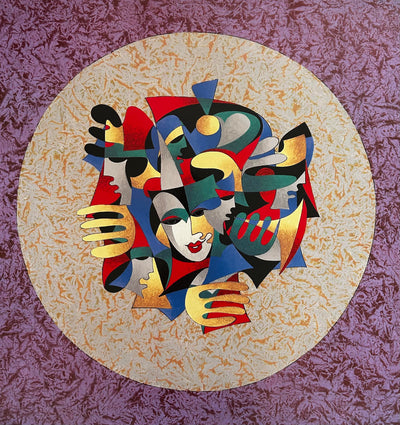The Story of Motion: Perspective by John
Before I started working for an Art Gallery, it didn’t take me very long to decide if I liked a piece of art. My process of deduction was very straightforward: if the artwork’s salient images and stylistic elements were attractive, I could infer some sense of preference towards liking it. My predisposition to simply “look at what’s there” made it easy for me to judge and call out beauty or in some cases, the lack thereof.
Lately, my perspective has been changing drastically. Now that I am forced to learn the stories behind artworks, I am realizing that real beauty – whether it is in the context of art alone or in anything embedded in our daily lives – is not a static attribute, but a byproduct of continually interweaving and interpreting stories. Real beauty is found not in what we see right away, but in what we come to understand because of what we begin to see when we seek more meaning.
A Change of Mind
Our gallery has a Jack Levine piece that looks like a Japanese Anime poster. I used to deride anime art because I thought it was too esoteric. So in a heartbeat, after seeing this piece displayed under the luminous gallery spotlights, I knew I didn’t like it. I think I almost called it cheap and undeserving to be displayed beside Picasso’s and Dali’s.
When I was researching about it, I found out that it was one of the pieces in Levine’s most noteworthy collections. As a major figure in Social Realist Art, he spent a significant period of time in Japan learning about the political and cultural landscape that had fortified the country. He satirically painted about the corruption and the profusion of greed and decadence in the powerful socio-political classes of Japan.
After piecing the stories together, I began to see the art in a different light. The characters in the piece must have represented the broader political climate that has equally uplifted and beset Japan. It’s about the age-old story of corruption in government, and deserves even more derision than Japanese Anime plots that somehow resemble the same setting.
Taking time to understand and not just perceive, I have learned that beauty is not based on fractions of thoughts derived from the initial snapshots of our senses. Each element that constructs our lives, from the simplest experience to the most valuable relationships, has its own story. If we take time to understand the finer points of the plot, we will surely see the grander scheme of why they’re collectively beautiful.
After all, beauty does not end in one story alone. It is constantly in motion…just like our lives.



Leave a comment